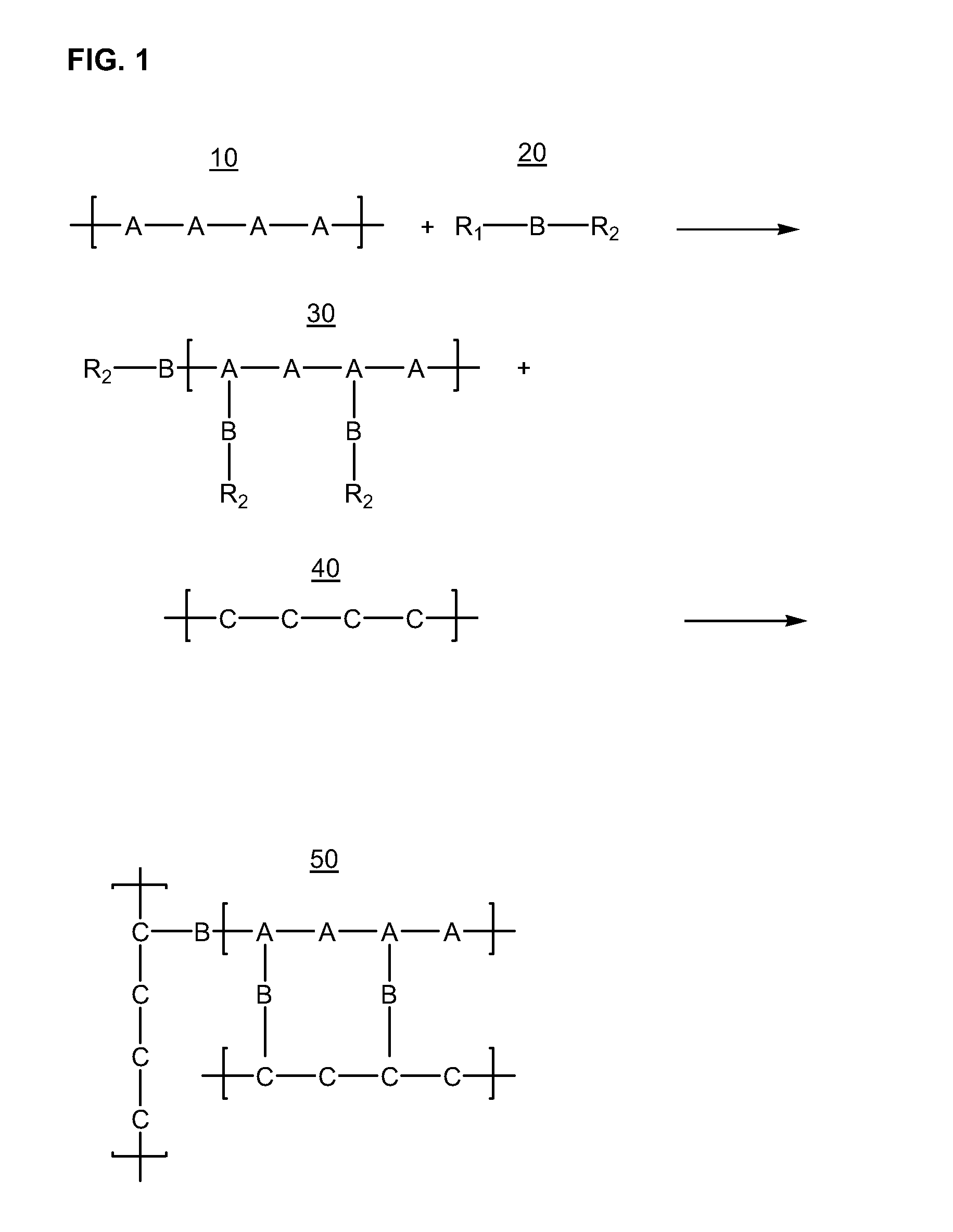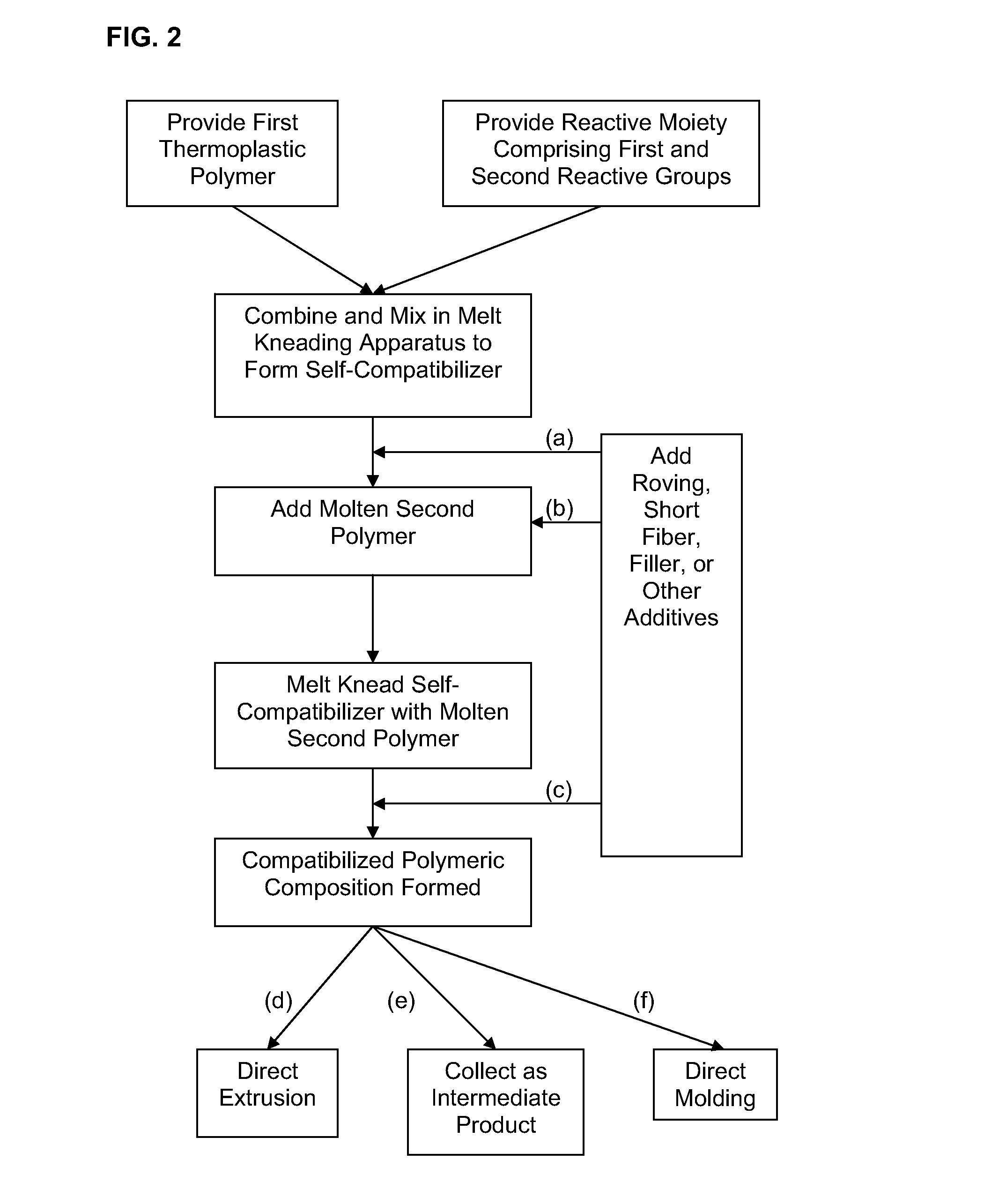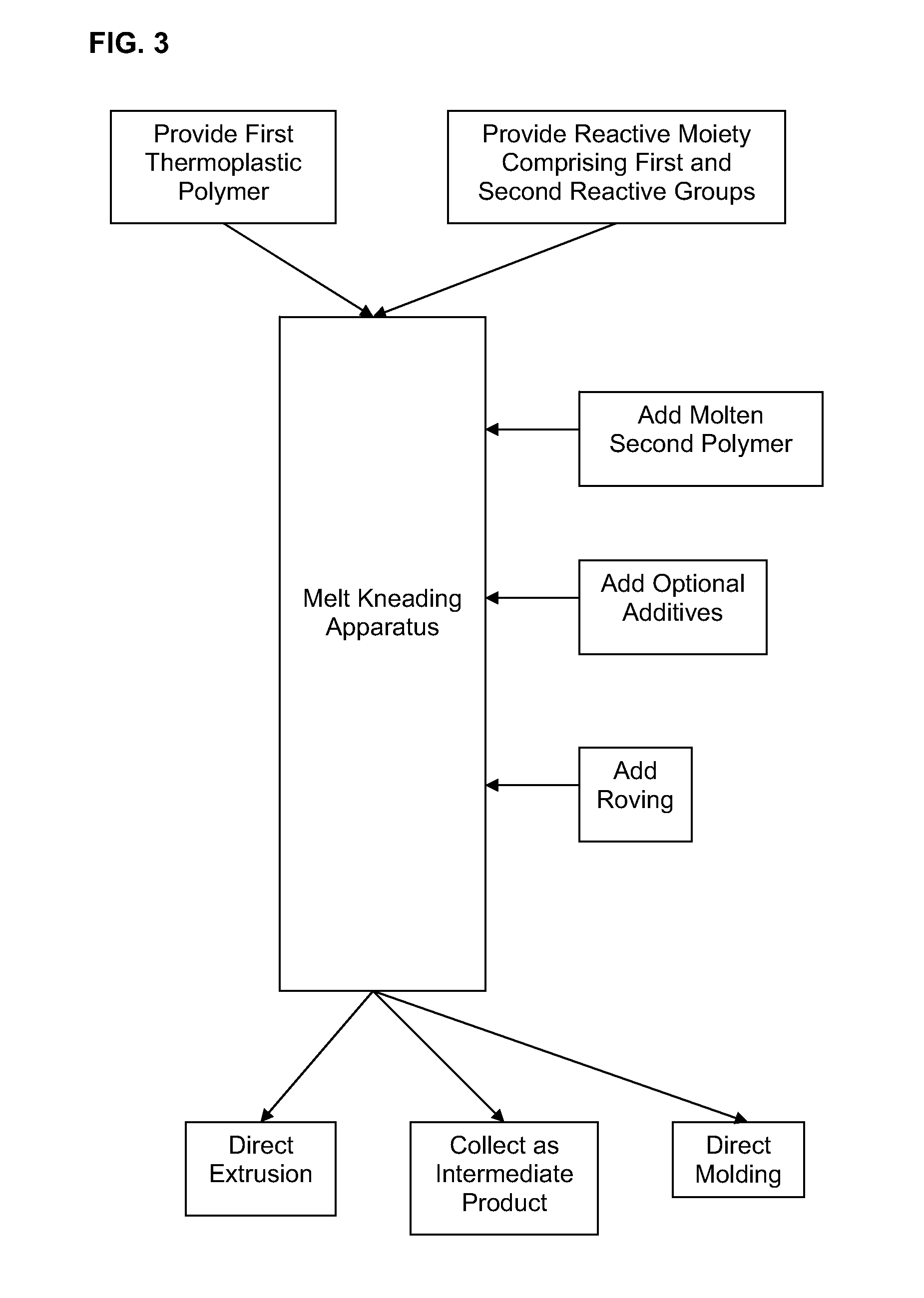Process for producing compatibilized polymer blends
a technology of polymer blends and polymer blends, applied in the direction of electrical equipment, basic electric elements, conductive materials, etc., can solve the problems of excessive energy consumption, laborious plurality of steps, and product performance not optimal, so as to achieve less cost, save energy, and improve efficiency
- Summary
- Abstract
- Description
- Claims
- Application Information
AI Technical Summary
Benefits of technology
Problems solved by technology
Method used
Image
Examples
example 1
[0114]100 kg of polyethylene resin Dowlex™ 2344, manufactured by Dow, 50 grams dicumyl peroxide (0.05% of the polyethylene weight), and 500 grams maleic anhydride (0.5% of the polyethylene weight) were dry blended. The mixture was fed into the main hopper of a first co-rotating twin screw extruder having a length to diameter ratio (L / D) of 60 at a rate of 100 kg / hr. A first side aperture was located halfway down the length of the extruder (where the L / D is about 30) and a second co-rotating twin screw extruder having L / D of 16 was mounted to the first side aperture; the two extruders were coupled by a melt pump. Both extruders were operated at 100-200 RPM screw speed. The first extruder was operated at 180-250° C., and the second extruder was operated at 230-280° C.
[0115]50 kg of Ultramid™ B50L 01 polyamide 6 resin was provided at a rate of 50 kg / hr and melt kneaded first in the second extruder. The molten polyamide 6 resin was then fed by the melt pump to the first extruder and mel...
example 2
[0117]For comparison, a compatibilized blend was made in a two-step process.
[0118]Step 1: Functionalizing the Polyethylene
[0119]100 kg of polyethylene resin Dowlex™ 2344, manufactured by Dow, 50 grams dicumyl peroxide (0.05% of the PE weight), and 500 grams maleic anhydride (0.5% of the PE weight) were dry blended. The mixture was fed into the main hopper of a first co-rotating twin screw extruder having a length to diameter ratio (L / D) of 40 at rate of 100 kg / hr. The extruder was operated at 100-200 RPM screw speed and a barrels temperature of 180-250° C. A vacuum vent along the last quarter of the first extruder was used to remove volatile byproducts. The resulting compound was extruded through a die, pelletized by a strand pelletizer, and dried at 45° C.
[0120]Step 2: Melt Kneading to Form Compatibilized Blend
[0121]The pellets of step 1 were dry blended with 50 Kg of Ultramid™ B50L01 polyamide 6. The mixture was then fed at a rate of 150 kg / hr to the first extruder of step 1, oper...
example 3
[0129]100 kg of polyethylene (PE) resin YUCLAIR™ PI500, manufactured by SK, 50 grams LUPEROX 101 peroxide manufactured by Arkema (0.05% of the polyethylene weight), and 1.5 kilograms Glycydil Methacrylate (GMA) (1.5% of the polyethylene weight) were dry blended. 5 kilograms talc was mixed with the blend, to absorb and immobilize the GMA on PE pellets. The mixture was fed into the main hopper of a first co-rotating twin screw extruder having a length to diameter ratio (L / D) of 48 at a rate of 60 kg / hr. A first side aperture was located halfway down the length of the extruder (where the L / D is about 24) and a second co-rotating twin screw extruder having L / D of 16 was mounted to the first side aperture. Both extruders were operated at 50-200 RPM screw speed. The first extruder was operated at 180-220° C. at the first half and 265-290 at the second half, and the second extruder was operated at 265-290° C.
[0130]30 kg of shredded Polyethyleneterephthalate (PET) beverage bottles (the PET ...
PUM
| Property | Measurement | Unit |
|---|---|---|
| size | aaaaa | aaaaa |
| length | aaaaa | aaaaa |
| length | aaaaa | aaaaa |
Abstract
Description
Claims
Application Information
 Login to View More
Login to View More - R&D
- Intellectual Property
- Life Sciences
- Materials
- Tech Scout
- Unparalleled Data Quality
- Higher Quality Content
- 60% Fewer Hallucinations
Browse by: Latest US Patents, China's latest patents, Technical Efficacy Thesaurus, Application Domain, Technology Topic, Popular Technical Reports.
© 2025 PatSnap. All rights reserved.Legal|Privacy policy|Modern Slavery Act Transparency Statement|Sitemap|About US| Contact US: help@patsnap.com



